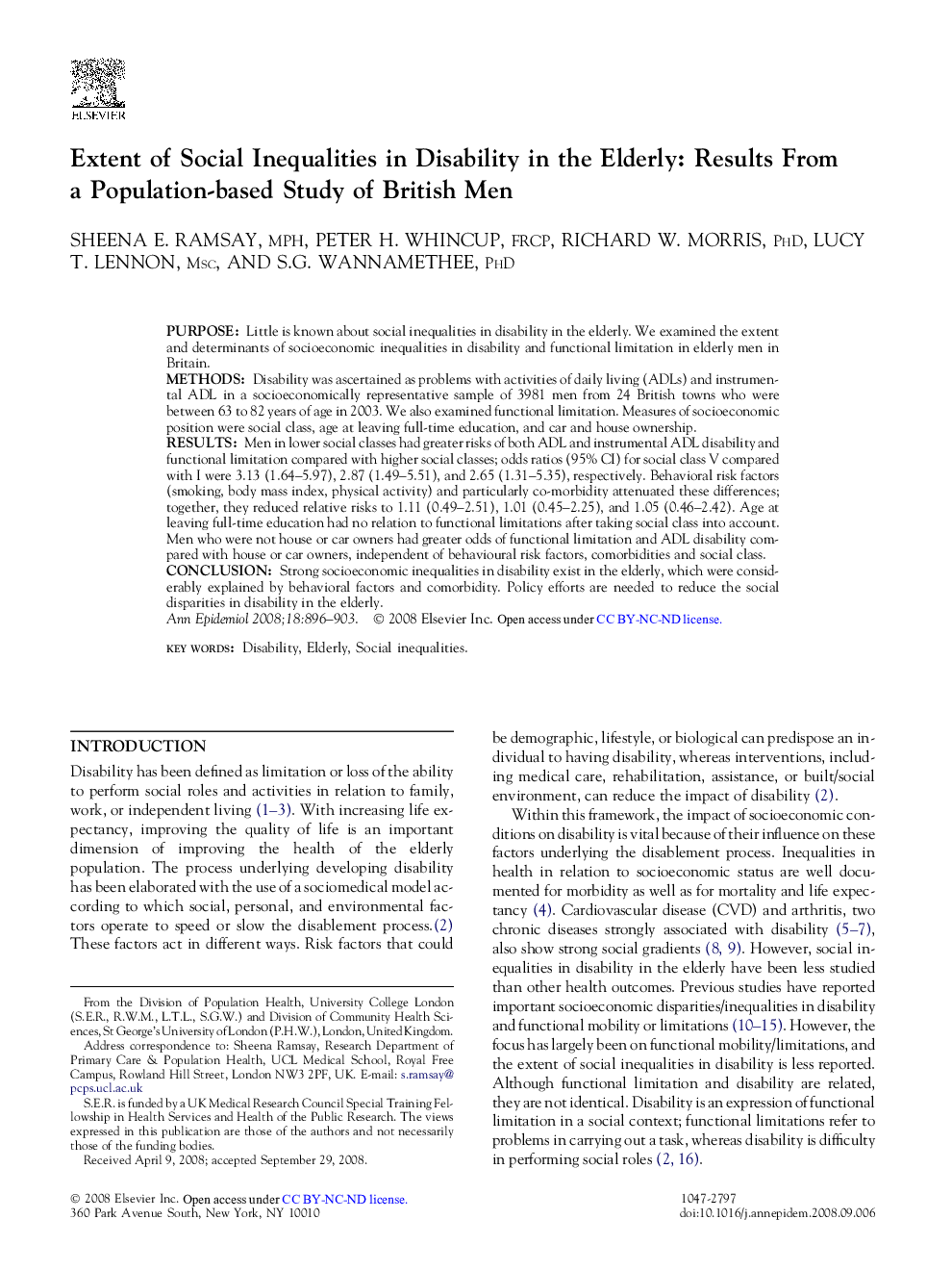| Article ID | Journal | Published Year | Pages | File Type |
|---|---|---|---|---|
| 6148939 | Annals of Epidemiology | 2008 | 8 Pages |
PurposeLittle is known about social inequalities in disability in the elderly. We examined the extent and determinants of socioeconomic inequalities in disability and functional limitation in elderly men in Britain.MethodsDisability was ascertained as problems with activities of daily living (ADLs) and instrumental ADL in a socioeconomically representative sample of 3981 men from 24 British towns who were between 63 to 82 years of age in 2003. We also examined functional limitation. Measures of socioeconomic position were social class, age at leaving full-time education, and car and house ownership.ResultsMen in lower social classes had greater risks of both ADL and instrumental ADL disability and functional limitation compared with higher social classes; odds ratios (95% CI) for social class V compared with I were 3.13 (1.64-5.97), 2.87 (1.49-5.51), and 2.65 (1.31-5.35), respectively. Behavioral risk factors (smoking, body mass index, physical activity) and particularly co-morbidity attenuated these differences; together, they reduced relative risks to 1.11 (0.49-2.51), 1.01 (0.45-2.25), and 1.05 (0.46-2.42). Age at leaving full-time education had no relation to functional limitations after taking social class into account. Men who were not house or car owners had greater odds of functional limitation and ADL disability compared with house or car owners, independent of behavioural risk factors, comorbidities and social class.ConclusionStrong socioeconomic inequalities in disability exist in the elderly, which were considerably explained by behavioral factors and comorbidity. Policy efforts are needed to reduce the social disparities in disability in the elderly.
